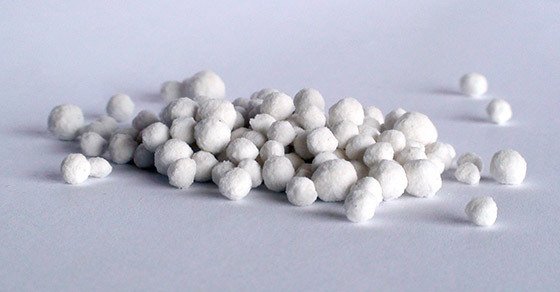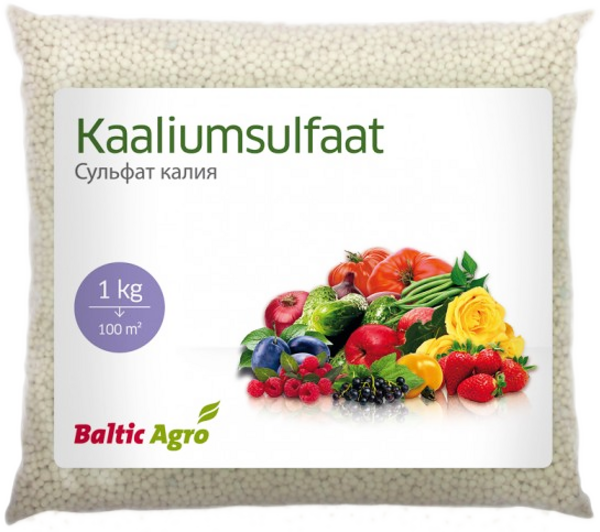Effective chlorine-free potash fertilizer.
Potassium sulfate K2SO4 is a highly effective chlorine-free potassium fertilizer containing the nutrient potassium necessary for normal plant growth and development.
Preparative form: white granules.
Packing: sealed plastic bags weighing 1.0 kg.
1,0 kg = 100 m2.

Benefits of using potassium sulfate in horticulture:
- increases the content of sugar and vitamins in plant cells;
- increases resistance to various diseases, and also reduces the risk of damage to fruits by gray rot;
- ensures the viability of perennial crops after winter;
- ideal for chlorine sensitive crops improves the circulation of fluid in plant cells, thereby ensuring an even distribution of nutrients, promotes the rapid development of the root system, improves the condition of the green mass;
- effectively affects the growth of plants, promotes the formation of new shoots;
- affordable and inexpensive;
- easy to use.
In minimal doses, it does not pose any harm or danger to human health.
Active ingredients: macroelements potassium (K2O) 53% and sulfur (S) 18%.
The maximum efficiency of potassium sulfate is manifested on sandy, peat and floodplain soils. A positive effect will also be observed on loams and chernozems (only if the potash fertilizer was applied to a well-moistened soil).
Most of all, crops need potash fertilizers during growth in calcareous areas, since the salt content in such soil is minimal. In plant tissues, the sugar level and the amount of vitamins increase, which increases the resistance of crops to diseases. Perennial plants tolerate wintering better and recover faster in spring. Potassium sulphate is excellent for feeding chlorine-sensitive plants. increases their productivity.
The drug stimulates the development of the root system and the growth of green mass of plants, and also improves the transport of nutrients from the roots to the aerial parts.
When introducing the drug, they use several methods, each of which has its own characteristics.
In dry form: the drug is allowed to be applied to the ground either in early spring, before planting, or in the fall, during the digging of the site for the winter.
Liquid top dressing: the most effective method, because crystals dissolved in water penetrate to the roots much faster. Dissolve the drug in water in accordance with the recommendations on the package.
Spray solution: If the plants need feeding during the growing season, you can prepare a spray solution. To do this, 35-40 g of granules are dissolved in 10 liters of water, mixed until completely dissolved and the green mass is sprayed. For feeding, prepare such an amount of solution that can be used at a time, since the finished mixture is not intended for storage.
When introducing the drug, they use several methods, each of which has its own characteristics. In dry form: the drug is allowed to be applied to the ground either in early spring, before planting, or in the fall, during the digging of the site for the winter.
Dosage:
Raspberry, strawberry, flower crops: 5-10 g / m2.
Potatoes, onions, beans: 20-25 g / m2.
Plum, cherry: 100-150 g / m2.











